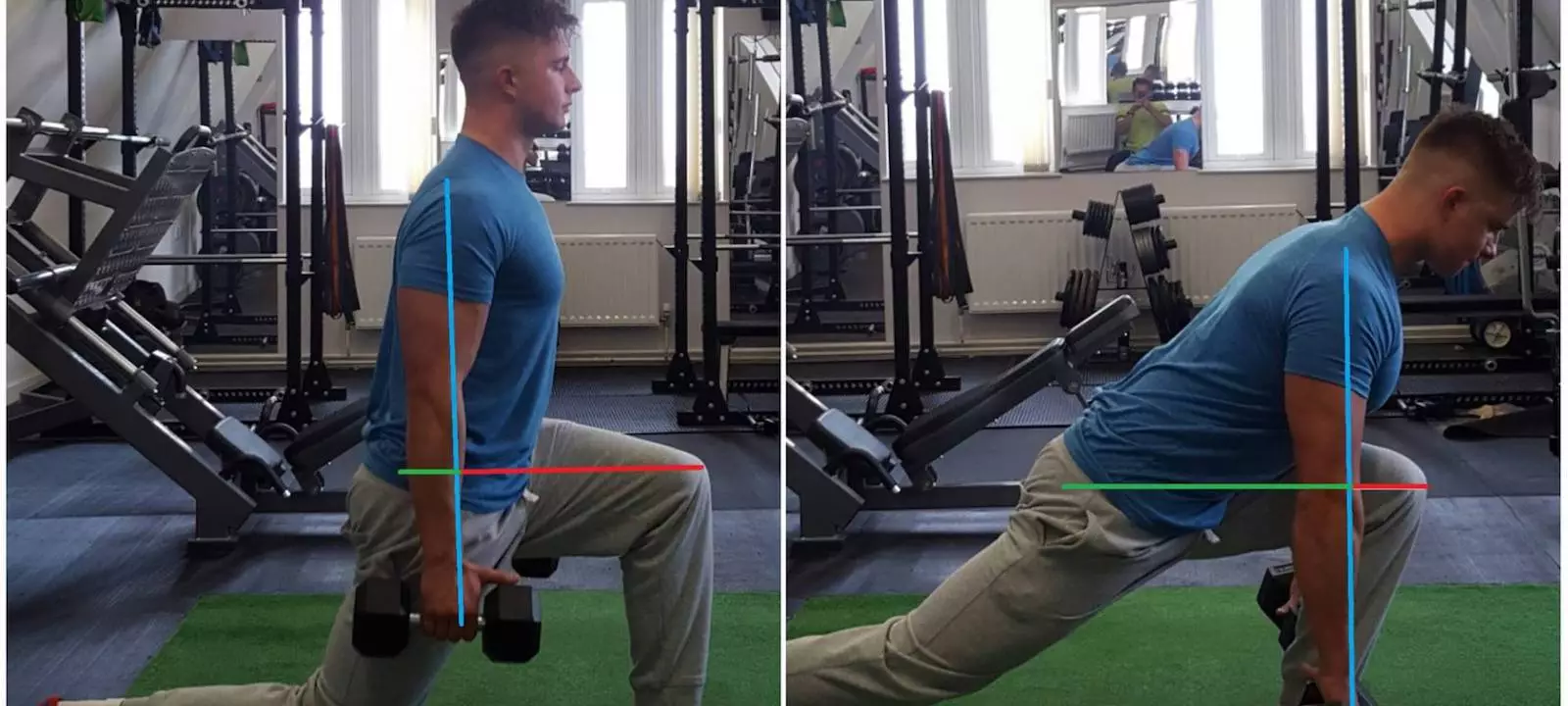There are different ways to perform the walking lunge dependent on which muscles you are wanting to target. Remember, when we are training for body composition we are training muscles NOT movements. Now let’s not over complicate things. The walking lunge, when done correctly, is complicated enough without the addition of a blindfolded pronated bicep curl into shadow boxing juggling single arm press.
There are too many ridiculous and pointless additions to exercises that serve no real purpose other than to confuse the hell out of people and make them feel like they are getting more ‘bang for their buck’ when working with a trainer.
In any exercise we need to realise the relationship between the moment arm, the line of force and the axis of rotation. The moment arms (green and red line) are the distance between the line of force (blue line) and the axis of rotation (in this case the hip and knee). The longer the moment arm, the more stress on the musculature involved in that joint movement. Just think of tightening a bolt (axis of rotation) with different lengths of wrenches (moment arm). How much harder would it be to tighten the bolt with a tiny wrench (small moment arm) compared with a longer wrench (larger moment arm). The same principles apply to exercise.
In the first picture I am performing the lunge with my torso in a more upright position with the dumbbells right by my side. Here, the moment arm to my knee is a lot longer than in the second picture where I am leant further forward with the dumbbells out in front of me. This therefore puts more stress onto the knee extensors (quads). In the second picture you can see the moment arm to my hips has increased therefore putting more stress into the hip extensors (glutes).
However, it is very important that you perform these exercises with internal focus. It is very common to see glute weakness and over dominant quads in a lot of people. Therefore, if you just perform the movement of the glute focused lunge without actually focusing on the glutes then you will take movement from where you are strongest (most likely quads). Think about contracting the glutes at the bottom to initiate the movement whilst keeping them contracted throughout hip extension.
You should have a clear focus in any training session and remember you are performing each exercise for a particular reason.
Train muscles NOT movements.

